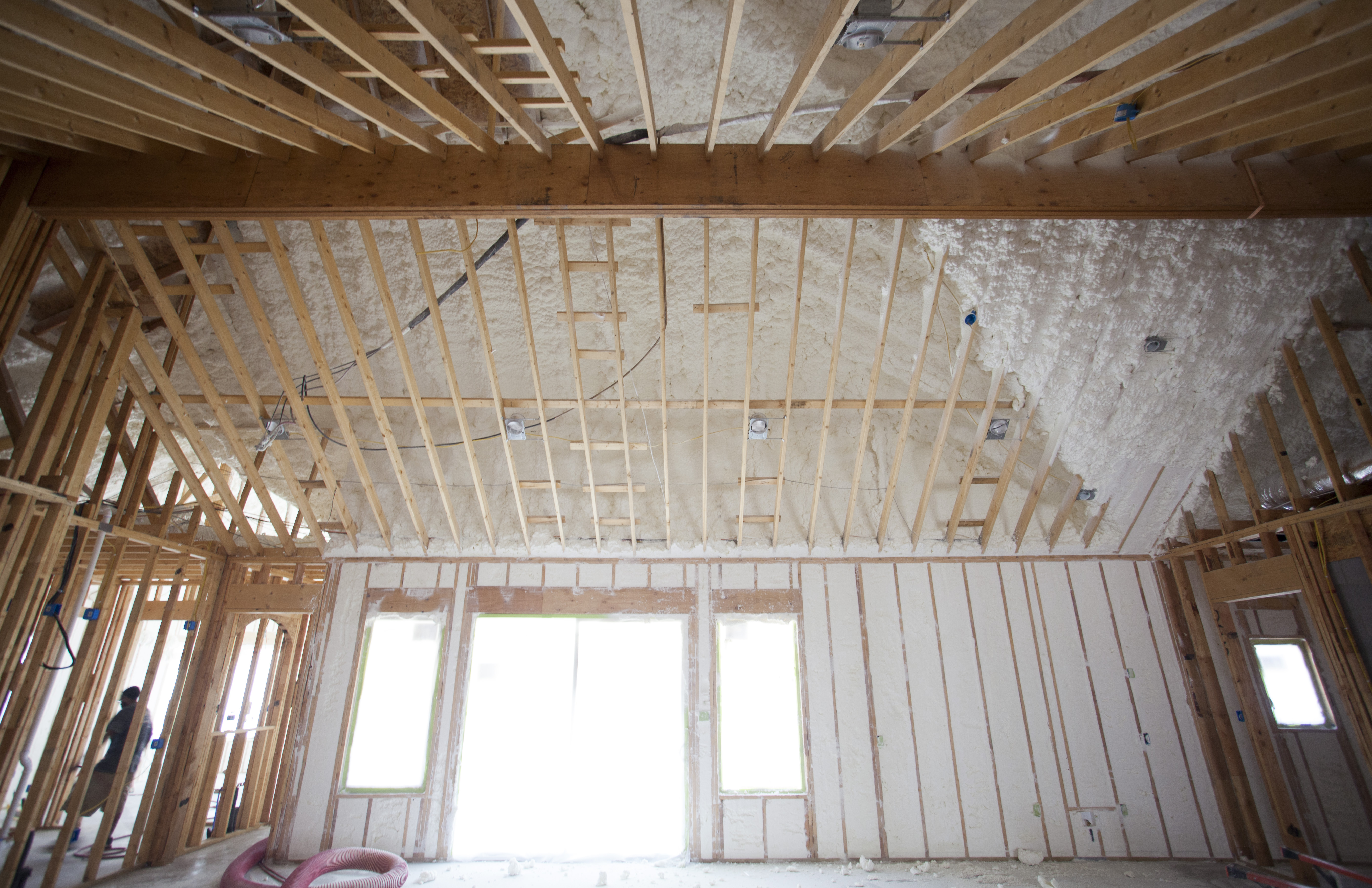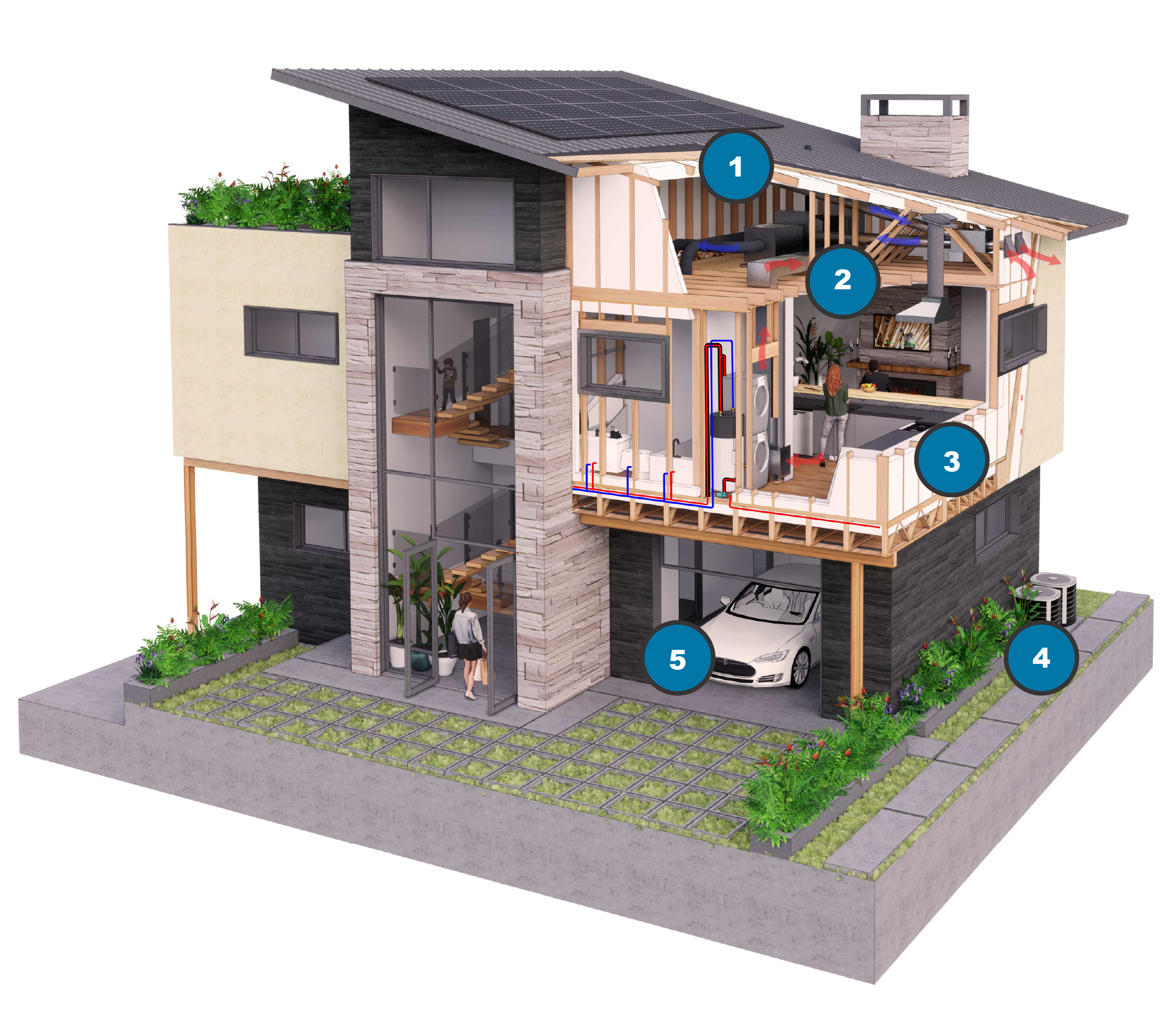Effective insulation under floors while protecting against moisture.
TYPES OF SPRAY FOAM INSULATION
There are two types of spray foam insulation: open cell and closed cell.
WHY SPRAY FOAM INSULATION IS SUPERIOR
Open and closed cell spray foam insulation creates an air barrier preventing unwanted air entry or loss from the home or building. The air sealing performance sets spray foam apart from alternative insulating materials because it reduces energy loss, prevents drafts, and keeps out allergens, dust, and other air pollutants
Closed cell insulation delivers the added benefits of a vapor barrier and structural reinforcement. Learn more about how spray foam insulation performs compared to fiberglass insulation, the most commonly used residential insulation
| Benefits | Closed Cell Spray Foam | Open Cell Spray Foam | Fiberglass Insulation |
|---|---|---|---|
| Insulates to building code | |||
| Provides air sealing to prevent heat loss in winter & heat gain in summer | |||
| Moisture barrier / Flood resistant | |||
| Better maintains room temperature to reduce burden on HVAC system | |||
| Improves indoor air quality & eliminates harmful airborne contaminants | |||
| Maximizes monthly heating & cooling cost savings | |||
| Reduces Sound Transmission | |||
| Strengthens structure of applied surface | |||
| Will not shrink, settle, or sag over time | |||
| Stable R-Value | |||
| Eliminates entry for bugs and pests |
The Versatility of Spray Foam
Insulating the underside of the roof deck for thermal barrier enhancement.
Ideal for both interior and exterior applications, sealing cavities or providing external insulation.
For roofing, enhancing energy efficiency and waterproofing.
Insulating walls and floors to prevent heat loss and moisture ingress.
Used in multi-story buildings for insulation between levels.
Insulating foundation walls to reduce heat loss and moisture intrusion.
Sealing gaps for improved energy efficiency and draft reduction.
Insulating to prevent heat loss and condensation.
Open-cell foam enhances sound insulation in walls and ceilings.
Commonly employed for insulating and sealing roofing, walls, and other applications
Insulating and protecting against extreme conditions.
Providing insulation in farm structures.
Maintaining temperature control.
Enhancing comfort and energy efficiency in recreational vehicles.
MORE SPRAY FOAM BENEFITS
Lowers Monthly Heating and Cooling Costs - Spray foam can save up to 50% or more on monthly heating and cooling costs by reducing HVAC system usage.
Lowers Long-Term Heating and Cooling Costs - A home with spray foam is usually able to downsize its HVAC unit. When it comes time to replace the HVAC unit, it won’t be as expensive as it would be with alternative insulating materials.
Increase Indoor Comfort - Spray foam creates more consistent temperatures in living spaces by keeping conditioned air inside and unconditioned air outside.
Healthier Indoor Air Quality - Spray foam creates an air barrier that reduces entry of dust, pollen, and other outdoor contaminants improving indoor air quality.
Long-Term Performance - Backed by a limited lifetime warranty, spray foam will not need to be replaced like traditional insulation.
Contributes to Sustainable Building - Reducing a home’s energy usage from heating and cooling lowers its carbon footprint, reducing its impact on the environment.
Ultimately, spray foam delivers superior insulation and air sealing performance, making homes and buildings more energy-efficient and comfortable year-round. Whether you're looking to lower energy bills, increase comfort, or improve indoor air quality, spray foam is the perfect solution.
READY TO GET STARTED WITH ENVERGE SPRAY FOAM?
Have questions? We’re here to help. Get connected with an Enverge spray foam expert in your area. Fill out the contact form and we’ll be in touch shortly.
*Indicates Required Fields






